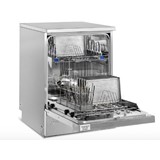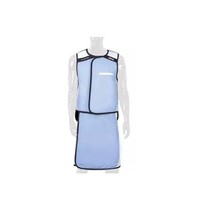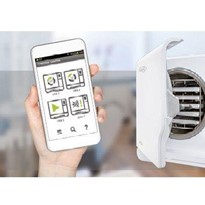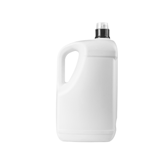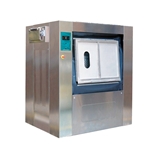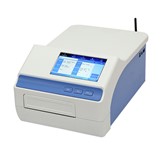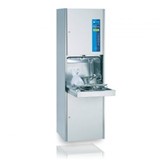Whereas steam sterilisers have long been a mandatory part of this process, more and more practices are now adopting dishwasher-style cleaners in their sterilisation areas. We asked MOCOM Australia’s Jim Owen about this trend and their Tethys range of benchtop and underbench auto-mated washer disinfector units.
ADP: Jim, washer disinfectors are becoming common-place in practices everywhere. What is their appeal?
JO: Overall, practice owners are looking to make their workplace safer and more efficient and where possible, reduce operating costs. Using an automated washer disinfector unit to clean instruments prior to sterilising offers benefits across all of these areas. There are obviously many steps involved with the tedious process of manually cleaning instruments. It’s an inefficient and time-consuming process. You may need to soak the instruments, scrub by hand, rinse and then dry by hand. All of these functions take time and require the full attention of the staff member completing the task to ensure it is completed correctly and to avoid sharps injuries or damage to expensive, fine instruments.
The process is very inefficient and can quickly cause a bottle-neck in instrument reprocessing for busy practices, particularly if there is a shortage of staff. Alternatively, an automated washer disinfector is an efficient, validated process delivering reproducible results every time. Instrument damage is eliminated. The potential for sharps injury is significantly mitigated. And it offers real cost savings over time.
Dirty instruments go straight from the surgery into the washer disinfector, the cycle completes and the instruments are clean and ready for packaging and sterilisation. Once you have a washer disinfector in your practice, there is never any doubt that this is the future. If I can quote the relevant Standard - AS/NZS 4187:2003 - Cleaning, disinfecting and sterilizing reusable medical and surgical instruments and equipment, and maintenance of associated environments in health care facilities, it states “the use of an automated cleaning process in a washer disinfector is the preferred means of cleaning, as an automated process is more reproducible than a manual cleaning process”.
ADP: Are washer disinfectors actually more cost-effective than manual reprocessing?
JO: Recently, I did a time and motion study at a large government clinic to try and determine exactly that. We had the clinic’s staff manually clean the instruments as they would normally do. We recorded how many instruments were being used, the cost of the detergents and whether it was one staff member or two required to keep pace with demand. Next, they completed the same functions using the MOCOM Tethys D60 and we recorded that. The labour cost at the clinic was $29.32 per hour per staff member. Manual cleaning required two operators cleaning and rinsing at the same time in order to meet the clinical requirements of the facility. So with all things considered, including detergent, it worked out to be a cost of a $1.65 per patient to clean the instruments manually.
We then did the comparison with our automated MOCOM D60 washer disinfector which only required a single operator at a labour cost of $29.32 per hour. Again, with all things considered, the cost worked out to be 79 cents per patient for instrument cleaning. So in this case, in one year, the costs saved - essentially through a reduction in the cost of labour - paid off the capital outlay for the machine. Doing this study really showed the benefit of having an automated cleaner over using a manual cleaning process.
This is obviously an example from a larger clinic, however the benefits are there for practices of all sizes because staff members can be utilised far more productively than scrubbing instruments and with greater overall morale. Replacement costs of instruments damaged during manual reprocessing is also an intangible factor and the toll of a sharps injury is very difficult to quantify.
Overall, once you’ve used a washer disinfector in your practice, customers say it would be very difficult to live without it. So it really does streamline the process.
ADP: How many models are there in the MOCOM Tethys washer disinfector range?
JO: There are four models overall - three under bench and one benchtop unit. We have the MOCOM Tethys T45, which is a 45-centimetre wide unit that is ideal for when underbench space is tight. It only comes in single phase power and does not have a drying cycle. Then we have the MOCOM Tethys T60, which is a full size unit with a width of 60 centimetres that comes in single or three phase power, again without a drying cycle. And then there’s the MOCOM Tethys D60 which is the same as the T60 but includes drying. The MOCOM Tethys H10 is our compact benchtop unit and it’s quite unique. It uses the power of ultrasonics to clean instruments, which means it only takes 35 minutes for pre-rinsing, washing, disinfection and drying. It’s perfect for smaller practices, or large practices that want a second washer disinfector unit that can turnaround small quantities of instruments fast.
ADP: How do you decide which model to choose?
JO: The first questions I always ask are what’s the size of your practice, how many sterilisers are you using, how many chairs are operating at once and how many instrument sets do you have? If you have a single steriliser, then the benchtop Tethys H10 is certainly a great option because it completes a cycle in 36 minutes and delivers clean, dry instruments ready for sterilisation. You can complete multiple cycles in the Tethys H10 whilst the steriliser is processing a single load, so it is ideal for that scenario. The Tethys H10 is also an option for larger practices looking for a second washer disinfector with a fast cycle time.
In most cases however, larger practices with multiple sterilisers that are processing a lot of instruments choose one of the underbench units. To run a highly efficient infection control protocol, you need to match the clinical demands of your practice to your inventory of instrument sets to the washer disinfector and the steriliser to eliminate bottlenecks. At any point, the doctors need to have sterile instruments in the surgery to use and so all the elements of the infection control workflow need to be tuned so as to cater to that demand, without simply spending an inordinate amount on instruments and equipment.
ADP: Washer disinfectors seem to be the perfect solution for cleaning instruments. Are they suitable for all types of instruments?
JO: There is sometimes confusion as to what can be processed in a washer disinfector. If you’re in doubt, we always recommend that you go back to the manufacturer of the instrument for advice and also to check the instructions for use as to how the instrument should be reprocessed. The thermal disinfection process is a chemical process and temperatures are quite high so instruments need to be able to tolerate these conditions.
Typically, most good quality stainless steel instruments can go through a washer disinfector. Different metals can react with each other and cause issues like spotting or corrosion so it’s important to make sure instruments are suitable.
ADP: Can you process handpieces in washer disinfectors?
JO: Yes and no. The MOCOM Tethys H10 benchtop unit is not suitable for handpieces due to its use of ultrasonics for cleaning. With our underbench range, however, you can opt for handpiece adapters as well as adapters for hollow instruments such as suction tips and things like that. These allow detergent to be forced up through the handpiece so it is thoroughly cleaned internally. It is of course important to lubricate the handpiece prior to sterilising. There are many accessories available for the Tethys range and part of the buying cycle is determining the best configuration for your individual practice. This includes whether you want to process handpieces and whether you need baskets for your instruments or whether you need racks for instrument cassettes.
ADP: So you can process instrument cassettes in the Tethys range?
JO: Absolutely. Even the small, fast benchtop Tethys H10 can process instruments in standard-sized cassettes. For
large practices utilising cassettes, the full size Tethys D60 or T60 can accommodate 12 plus cassettes in one cycle. Using instrument cassettes as part of your infection control workflow takes safety and efficiency to yet another level - the instruments travel in the closed cassette from the surgery, into the washer disinfector, then through packaging and sterilisation without ever being handled.
ADP: Testing and validation of sterilisers is obviously mandatory. Is there also a need to validate and test washer disinfectors?
JO: Washer Disinfectors need to be checked with a “soil” test every quarter. The soil test is a chemical indicator that contains protein, lipids and polysaccharides to mimic surgical soil. It’s placed into a “process challenge device” that is placed in the machine and processed. If it has been removed at the end of the cycle , then the washer disinfector is functioning correctly. And then there’s an annual validation, which is a process where a technician needs to be on site to run several cycles, place probes inside the machine and check that it is achieving the correct temperature. So it is a somewhat similar approach to a steriliser.
ADP: Is there any advantage to buying both a steriliser and a washer disinfector from MOCOM?
JO: Yes. There are a number of synergies, not least being common service and support. If you’re purchasing the Tethys H10, the user interface and operation is exactly the same as our Futura sterilisers. Both also download cycle data the same way as PDF files onto a USB key or via WiFi.
ADP: So how is cycle data recorded?
JO: In terms of tracking the cycle data, the T45, T60 and& D60 washer disinfectors are similar to our sterilisers.
There is a printer connected to the unit that prints out cycle data or we offer free software that will automatically upload and save cycle data to your PC via a serial port connection. The Tethys H10 actually saves the cycle data in its own memory as a PDF file. Another great feature is that the Tethys H10, like our sterilisers, can give each user their own unique pin code so as to record who checked the cycle data. And then that can simply be transferred via the included USB key to your computer as a backup.
ADP: Thank you for your time, Jim.






